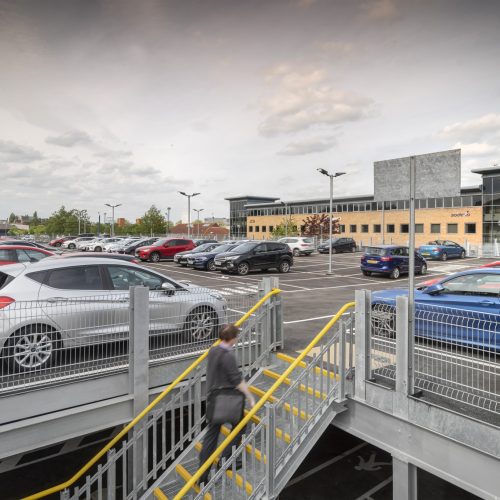Some interesting themes emerged from Great British Railways’ long term strategy consultation. One of these was how the rail network will fit into a broader transport infrastructure strategy for the UK.
Early rail companies were pioneers in connecting different parts of the country to open greater opportunities for travel, commerce and prosperity. Building on that legacy over the next 30 years involves understanding how rail infrastructure should adapt to support other transport modes, including sustainable and active travel.
One of the chief difficulties is that we can’t say with certainty what the world will look like 30 years from now. What travel needs will people have and how will they prefer to make journeys? What transport innovations might come along that we can’t hope to foresee?
While there are clear trends, solutions must be flexible. The future will look different from how we imagine it today. Remember how we’re still waiting for the flying cars that were predicted with such confidence back in the 20th century.
What will we drive, and how?
The future role of the private car is maybe the hardest to predict. We can be fairly certain that cars will have some level of autonomy and won’t be powered by internal combustion engines. But there are many unknowns beyond that.
We’ve become so accustomed to private ownership of seemingly ever larger cars that it’s hard to imagine an alternative. But in 30 years’ time how many of us will own our own car? What size will they be? Will they be able to self-park away from a rail station after dropping off the owner?
Building flexibility
How can the car parks we build today to support transport hubs and intermodal connections offer the flexibility needed for such a dynamic future? Monolithic reinforced concrete structures clearly aren’t the answer.
The modular car park system developed by Octavius and Siderpark is designed for adaptability. It has a lightweight steel superstructure that can easily be added to or reduced in size to reflect demand. The large internal spans make it easier to reconfigure spaces to achieve optimum density while allowing ample space for each vehicle (whatever size they turn out to be).
As the infrastructure for active and sustainable transport improves there may be less need for car parking and more for secure bike storage and e-bike charging. These changes are easy to accommodate, as is the addition of EV charging points as demand grows.
And if offsite self-parking becomes a reality the structure can easily be dismantled and reconstructed somewhere else.
In an uncertain environment, adaptability is the best investment you can make.
For more information contact Barry Goss (barry.goss@octaviusinfrastructure.co.uk) or take a look at our resource centre.


